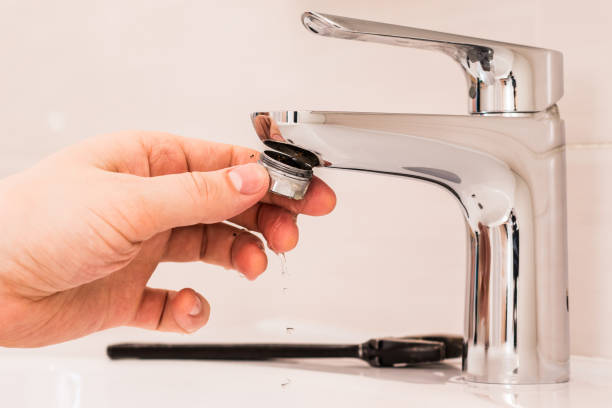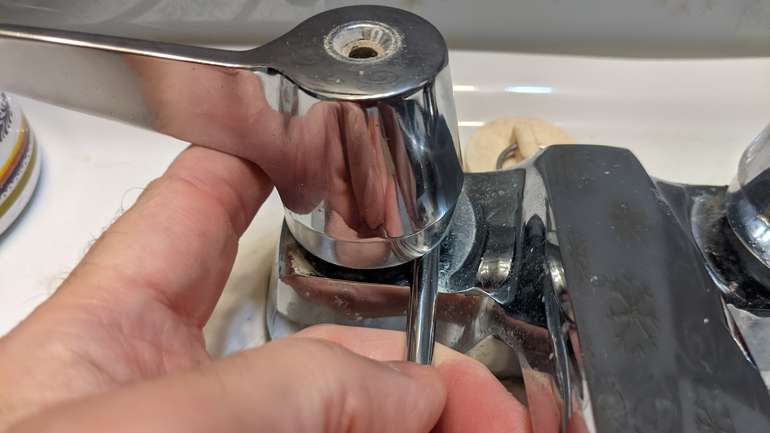Why It's Required to Fix a Dripping Faucet
Why It's Required to Fix a Dripping Faucet
Blog Article
Right here below you can find some sound resources relating to Should I Repair or Replace a Leaky Faucet?.

Trickling faucets might look like a small trouble, however their effect exceeds just the nuisance of the noise. From wasting water to incurring unnecessary financial costs and health threats, overlooking a leaking faucet can bring about numerous consequences. In this short article, we'll delve into why it's vital to address this usual family issue without delay and properly.
Wastage of Water
Ecological Effect
Trickling faucets add substantially to water wastage. According to the Epa (EPA), a single tap leaking at one drip per secondly can squander greater than 3,000 gallons of water per year. This not just pressures water resources however additionally influences environments and wild animals dependent on them.
Financial Expenses
Enhanced Water Costs
Beyond the ecological effect, leaking taps can inflate water bills considerably. The accumulated wastefulness gradually converts into higher utility costs, which might have been prevented with timely fixings.
Prospective Residential Property Damages
In addition, extended leaking can cause harm to components and surface areas surrounding the faucet. Water build-up can trigger staining, corrosion, and also structural concerns if left unattended, causing added fixing prices.
Health Worries
Mold and Mold Development
The consistent visibility of moisture from a leaking tap creates a perfect setting for mold and mildew and mildew development. These fungis not just compromise interior air quality however likewise posture health risks, especially for people with respiratory system problems or allergic reactions.
Waterborne Diseases
Stationary water in trickling faucets can end up being a breeding place for germs and other pathogens, enhancing the risk of waterborne diseases. Impurities such as Legionella microorganisms prosper in stationary water, possibly causing major diseases when consumed or breathed in.
DIY vs. Specialist Repair service
Benefits and drawbacks of DIY Fixing
While some might attempt to deal with a leaking tap themselves, DIY repairs include their very own set of obstacles. Without proper understanding and devices, DIY efforts can exacerbate the concern or lead to insufficient fixings, prolonging the issue.
Advantages of Working With a Professional Plumber
Hiring an expert plumber makes certain that the underlying cause of the dripping faucet is resolved properly. Plumbings possess the know-how and devices to identify and repair faucet issues efficiently, saving time and decreasing the threat of more damages.
Step-by-Step Overview to Taking Care Of a Dripping Faucet
Tools Called for
Before attempting to deal with a trickling faucet, collect the needed tools, consisting of a flexible wrench, screwdrivers, replacement parts (such as washing machines or cartridges), and plumber's tape.
Typical Tap Issues and Their Solutions
Determine the kind of faucet and the particular problem creating the drip. Usual troubles consist of worn-out washing machines, corroded valve seats, or defective O-rings. Describe supplier instructions or on the internet tutorials for detailed support on repair work.
Preventive Measures
Routine Maintenance Tips
To avoid trickling taps, perform routine maintenance such as cleaning up aerators, evaluating for leaks, and replacing worn-out parts quickly. Furthermore, take into consideration mounting water-saving tools or updating to extra effective fixtures.
Significance of Prompt Repair Works
Dealing with dripping faucets as quickly as they're noticed avoids more water wastefulness and prospective damage, inevitably conserving both water and cash over time.
Impact on Home Value
Assumption of Well-Maintained Residential Property
Maintaining a residential or commercial property in good condition, consisting of dealing with upkeep issues like leaking faucets, boosts its perceived worth and worth among prospective buyers or occupants.
Impact on Resale Worth
Residences with properly maintained plumbing fixtures, including faucets, command higher resale values in the real estate market. Attending to leaking taps can add to a favorable impact throughout property inspections and arrangements.
Ecological Obligation
Private Contribution to Preservation
Taking responsibility for dealing with leaking faucets aligns with broader efforts towards water conservation and environmental sustainability. Every person's actions jointly make a significant influence on protecting priceless resources.
Lasting Living Practices
By focusing on punctual fixings and taking on water-saving habits, individuals add to lasting living methods that profit both existing and future generations.
Final thought
Attending to a leaking tap goes beyond mere convenience; it's an essential step towards preserving water, reducing economic expenses, and securing health and wellness and residential or commercial property. Whether through DIY repairs or expert assistance, acting to fix leaking faucets is a small yet impactful means to advertise responsible stewardship of sources and add to a healthier, more sustainable future.
How to Fix a Leaky Faucet: Step-by-Step Repair Guide
A leaky faucet may seem like a simple annoyance, but if it's not fixed promptly, that leak could cost hundreds to potentially thousands. From water damage to mold, mildew, and high water bills, even a tiny leak can be catastrophic if left unattended. Damage like this can even affect the overall value of your home, so it's important to take the right approach for leaky faucet repair. You may need the help of a plumber in some cases, but we've got a few tips you can try on how to fix a leaky faucet before calling the pros.
Four Faucet Types
When you're learning how to fix a leaky faucet, the first step is knowing what kind of faucet you're working with! There are four common types.
Cartridge Faucets
Cartridge faucets come in one- or two-handled varieties. In one-handled cartridge faucets, hot and cold water combines in a single cartridge. In the two-handled versions, hot and cold water are controlled separately and mixed in the faucet.
Ball Faucets
Ball faucets have a single lever you push up and down to adjust the pressure and rotate to change the temperature. A slotted metal ball controls the amount of water allowed into the spout.
Compression Washer Faucets
They're the oldest type of faucet, but they're still used in many homes — especially older ones. Compression faucets have two separate handles that, when turned, raise or lower the washer that seals a water valve. This valve stops water from flowing through the faucet when it is turned off.
Disc Faucets
Disc faucets rarely need to be repaired due to their maintenance-free design. The water flow is controlled by two discs — the upper one raises and lowers against a fixed lower disc, creating a watertight seal. If your disc faucet starts leaking, you may need to replace the seals or clean residue buildup from the inlets.
Fixing a Leaky Faucet
Step 1: Turn Off the Water
Whether you're learning how to fix a leaky bathtub faucet or how to fix a leaky kitchen faucet, always turn off the water supply to your working area when you're fixing a leak. The last thing you want is a flood added to your list of things to fix.
Look for the shutoff valves below your sink or around the tub and turn them clockwise to stop the water flow. If your faucet doesn't have shutoff valves, you may need to turn off the water for the whole house. Check to make sure it's off by turning the faucet on. If nothing comes out, you're ready to start the repair.
Step 2: Take Apart the Faucet
How you disassemble your faucet depends on the type of fixture you have. You can use a flathead screwdriver to remove the caps on top of the handle or handles for cartridge and compression faucets. Inside, you should see handle screws. Unscrew these with a screwdriver to remove the handle.
Disc- and ball-style faucets will typically have an inlet screw near the handle, and removing that will reveal the interior of the faucet.
Detach the Valve Stem
For cartridge- and compression-style faucets, you'll see the inner valve stem or cartridge once you remove the faucet handles. If you have a compression faucet, unscrew the brass valve stem. If you have a cartridge faucet, pull out the cartridge. If your cartridge has been in place for a while, it may require some tools or extra force to remove it due to mineral deposits.
Examine and Replace Parts
Once you've removed the parts, check them out to confirm what needs to be replaced. You may see corroded rubber washers, O-rings, stems, or cartridges. On a ball-style faucet, check the seats and springs for damage.
If you need to repair a leaky disc faucet, check the inlet and seals on the lower disc.
Once you determine what parts must be replaced, visit your local hardware store. Bring the damaged parts with you to ensure you can purchase the correct components to replace them.
Clean Valves and Faucet Cavity
If you've removed a stem or cartridge, you may notice mineral buildup in the faucet's threads. Use white vinegar to clean the valve seat by soaking it for a few minutes, then scrub it away with a soft toothbrush and rinse with warm water. You can also clean the interior of the faucet in the same way.
Reassemble the Faucet
Once your faucet is cleaned and the required parts have been replaced, it's time to reassemble it. Put the pieces back together and slowly turn the water supply back on. Doing this slowly is crucial because too much initial water pressure can damage the new hardware you've just installed.
https://homewarranty.firstam.com/blog/how-to-fix-leaky-faucet

Do you appreciate reading up on Water Dripping from Faucet: Why and How to Fix? Write a remark down the page. We would be pleased to listen to your opinion about this entry. We are looking forward that you visit us again in the near future. Sharing is caring. You just don't know, you may just be doing someone a favor. Thanks for your time. Kindly visit our website back soon.
Report this page